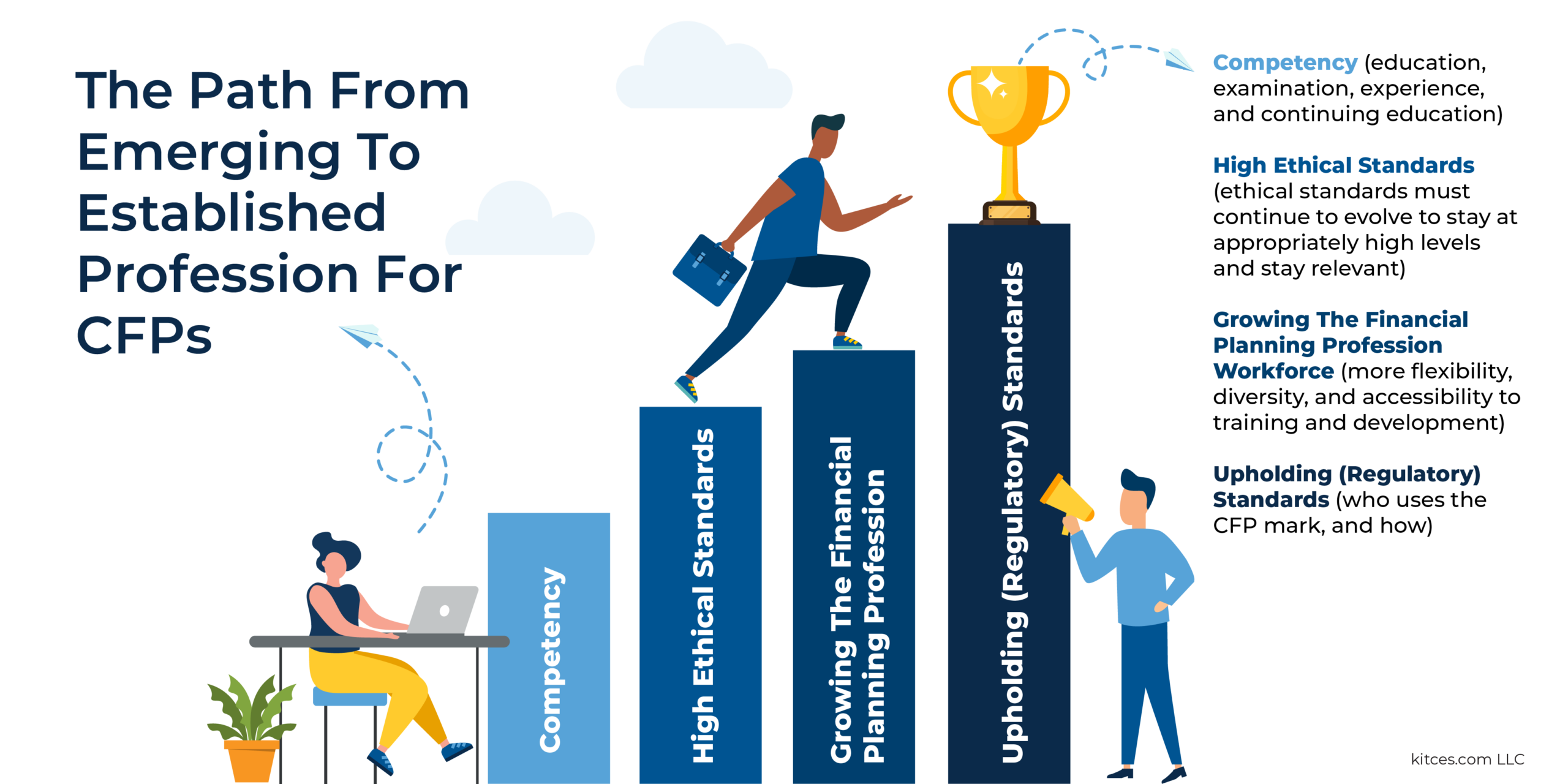In the mid-20th century, the first phone call for a person who needed guidance on saving or planning for retirement was likely to be to a stockbroker or a mutual fund or insurance salesperson. But while some of these salespeople may have certainly been able to provide sound advice, there was really no way at that time for a consumer to know which among the many brokers and agents out there were actually capable of giving true and sound advice that would help them reach their goals. So, in the late 1960s, a movement began to organize and promote best practices that would establish financial planning as a true profession. As a result, in 1973, a group of 35 planners became the inaugural recipients of the CFP marks.
In this guest post, CFP Board Chair Dan Moisand reflects on lessons learned on the 50th Anniversary of the first class of CFP certificants (which has seen the number of certificants grow from that initial 35 to approximately 92,000 active CFP professionals today), assesses the current state of CFP Board and its multipronged approach towards both serving the public and promoting the financial planning profession, and lays out what’s needed for financial planning to continue its evolution towards becoming a ‘true’ profession on the same levels as law and medicine.
The rising popularity of CFP certification was thanks in large part to CFP Board’s setting of rigorous educational and examination requirements that established a high bar of competency for those who wished to use the CFP marks. Gradually, CFP Board also raised the ethical standards for CFP professionals, introducing a fiduciary standard on financial planning in 2008 and, in 2020, an expanded fiduciary standard that applies whenever the certificant is giving financial advice. And despite occasional setbacks (such as the 1999 introduction of an “Associate CFP” designation, which was poorly received because it was seen as lowering the standards applicable to those who called themselves CFP certificants) and a highly publicized 2019 Wall Street Journal article that found numerous CFP certificants with undisclosed disciplinary histories (which exposed the limitations of allowing certificants to self-report their own disciplinary events, leading to an overhaul of how CFP Board oversees the investigation and enforcement of disciplinary cases), CFP Board’s efforts to expand public awareness has led to widespread recognition of and preference for CFP certification among the audience of potential consumers.
Looking ahead, CFP Board’s main challenge involves balancing the need to maintain (and, where necessary, raise) the competency and ethical standards for CFP certificants against the urgent demand for more financial planners, and also to increase diversity within the profession to serve a wide range of financial planning needs among the general public. Which has led the CFP Board not only to review various standards that relate to obtaining and maintaining the right to use the marks, but also to split itself into a new 501(c)(6) entity (that can more directly promote the financial planning profession itself – both to consumers and potential CFP certificants) alongside its existing 501(c)(3) entity (that will continue to serve for the public benefit).
Ultimately, as the number of CFP professionals projects to surpass 100,000 in the next 12–18 months, CFP Board will inevitably encounter challenges in upholding its standards among an ever-widening base of certificants – made more complicated by the fact that, as a non-regulatory authority, its ability to enforce its standards is essentially limited to being able to prevent someone from using the CFP marks if they violate the standards. However, as CFP certification and public awareness continue to grow, the value of certification will grow in kind, which serves as its own motivation to continue to serve the public well for CFP certificants – which, in turn, will continue to help financial planning move towards an ‘established’ profession that benefits both the general public and CFP certificants themselves!


